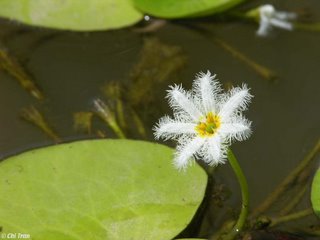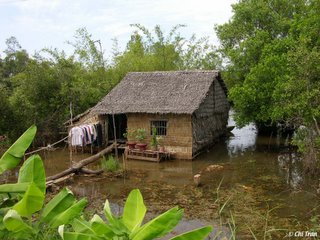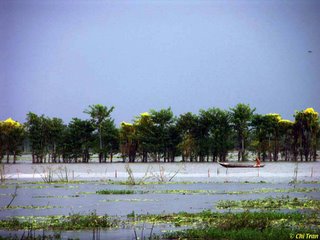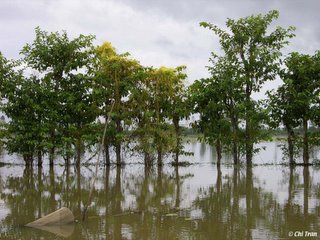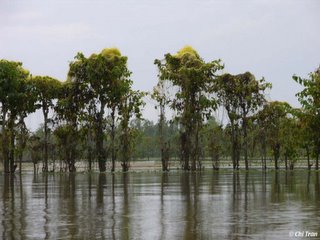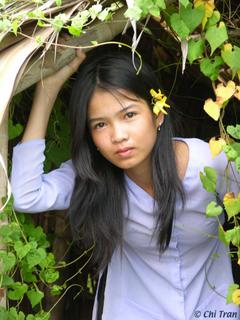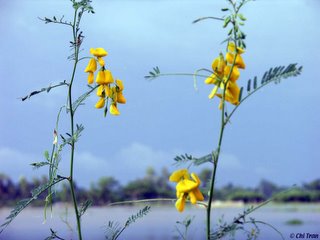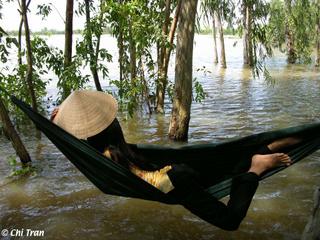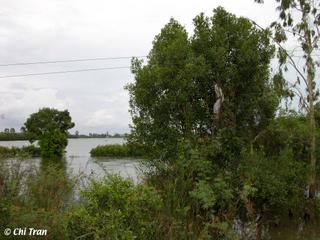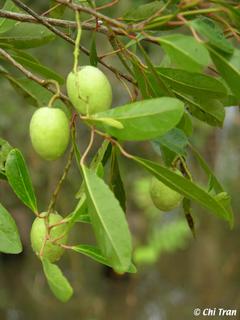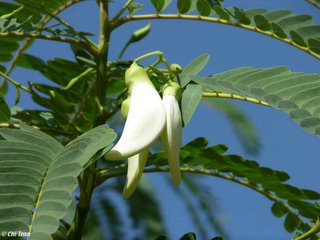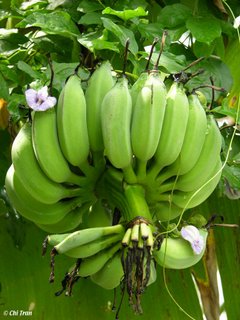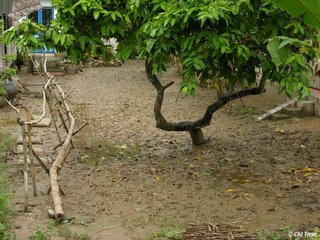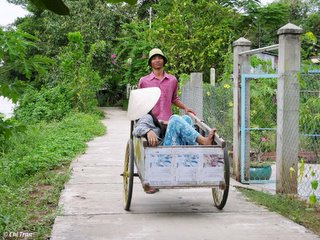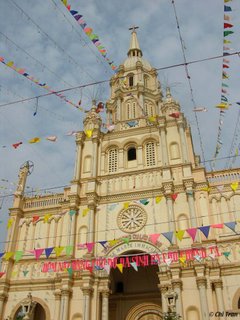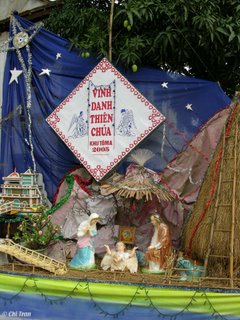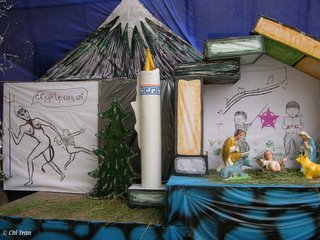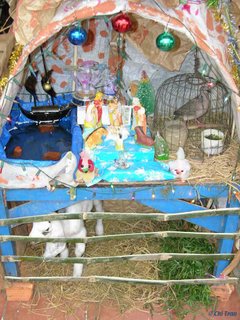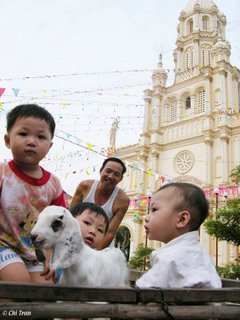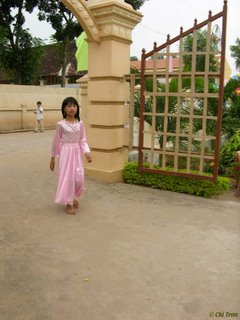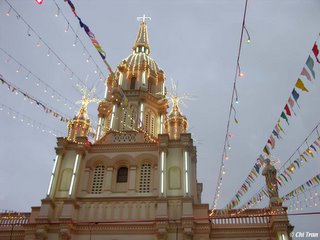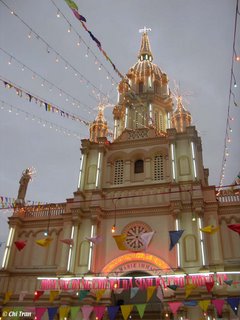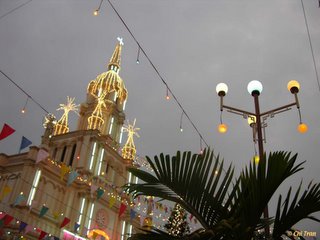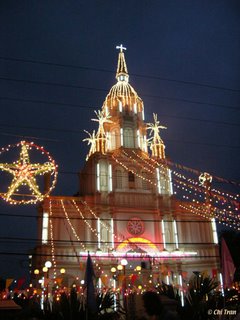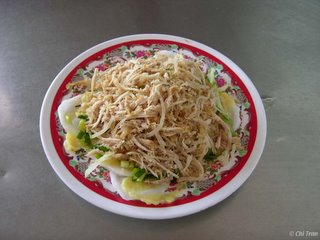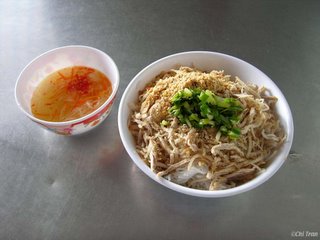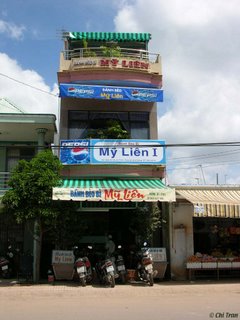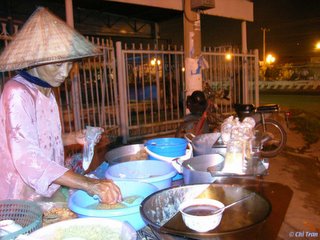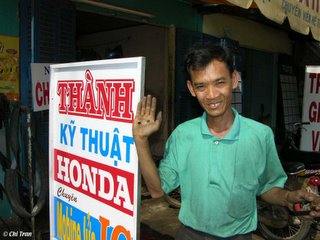Mekong Delta Life.
 Vietnam is a monsoon country, that means it rains about six months or more each year. Yet, its people don't take the rain seriously, probably because it's refreshing to get around in the rain unless it's a not so common chilly stormy rain. During the rainy season, it rains almost every afternoon, but people still prefer to take shelter or just ignore the rain completely.
Vietnam is a monsoon country, that means it rains about six months or more each year. Yet, its people don't take the rain seriously, probably because it's refreshing to get around in the rain unless it's a not so common chilly stormy rain. During the rainy season, it rains almost every afternoon, but people still prefer to take shelter or just ignore the rain completely. People of the Mekong Delta live along the water ways, pontoons (I'm not sure if it's the correct word, please advise me) of all shapes and sizes are built to serve the everyday chores involving washing.
People of the Mekong Delta live along the water ways, pontoons (I'm not sure if it's the correct word, please advise me) of all shapes and sizes are built to serve the everyday chores involving washing.This one really struck me, I had to stop and took a picture then I asked the people nearby about the pontoon's usability. Everybody said it was quite OK to use it. For me, I doubted it knowing from my experience how the people there disregarded any notion of safety. My doubt was confirmed when an old woman came forward and spoke softly that she was the owner of the pontoon and she did fall into the water a few times!
 Only a few minute ride later, I found another unusual construction. Well, not one but two bridges side by side. The first thought that came to my mind was that there must be something wrong with this neighborhood but still could not figure out exactly how. Then I talked to the kids playing nearby, they said there had been a feud going between two families living next to each other, so they had to build and use their own bridge!
Only a few minute ride later, I found another unusual construction. Well, not one but two bridges side by side. The first thought that came to my mind was that there must be something wrong with this neighborhood but still could not figure out exactly how. Then I talked to the kids playing nearby, they said there had been a feud going between two families living next to each other, so they had to build and use their own bridge! This climbing vine gives a crunchy vegetable called 'dau rong' (dragon bean) eaten raw with 'mam chung' (steamed mam and ground pork). The beans in this picture are still young.
This climbing vine gives a crunchy vegetable called 'dau rong' (dragon bean) eaten raw with 'mam chung' (steamed mam and ground pork). The beans in this picture are still young. This pontoon was still submerged at high tide. I wish I had a model ready to pose her in ao dai sitting or lying on the pontoon to make an interesting picture.
This pontoon was still submerged at high tide. I wish I had a model ready to pose her in ao dai sitting or lying on the pontoon to make an interesting picture.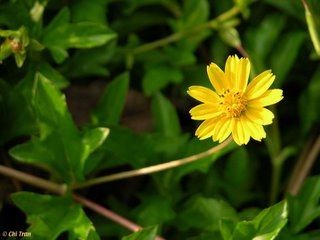 For some reason, ground cover is not widely used for landscaping in Vietnam. This specie of ground cover doesn't put out lots of flower but its leaves are deep green and look robust.
For some reason, ground cover is not widely used for landscaping in Vietnam. This specie of ground cover doesn't put out lots of flower but its leaves are deep green and look robust. This wild and thorny grass called 'mac co' (shy) intrigued me when I was a child, when touched or agitated by the wind, its leaves would close a long while then would reopen again.
This wild and thorny grass called 'mac co' (shy) intrigued me when I was a child, when touched or agitated by the wind, its leaves would close a long while then would reopen again.In Viet poetry and music, this flower is called 'hoa trinh nu' (virgin flower)
